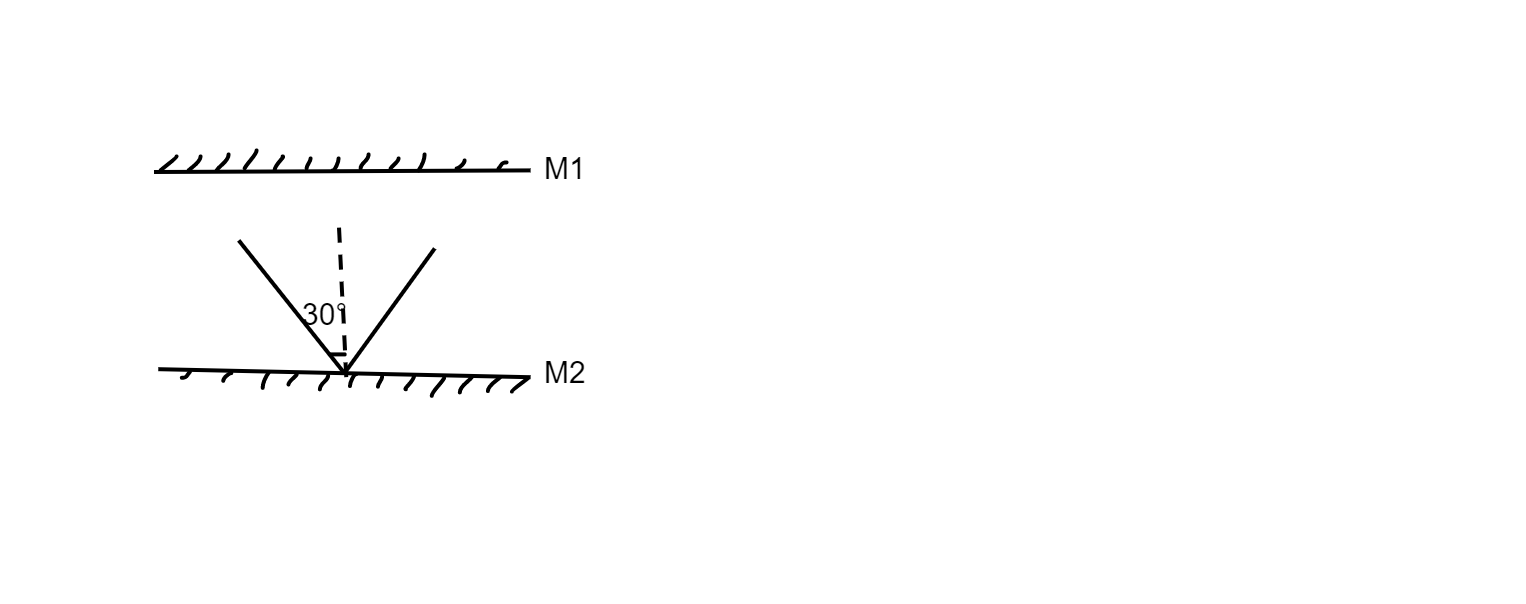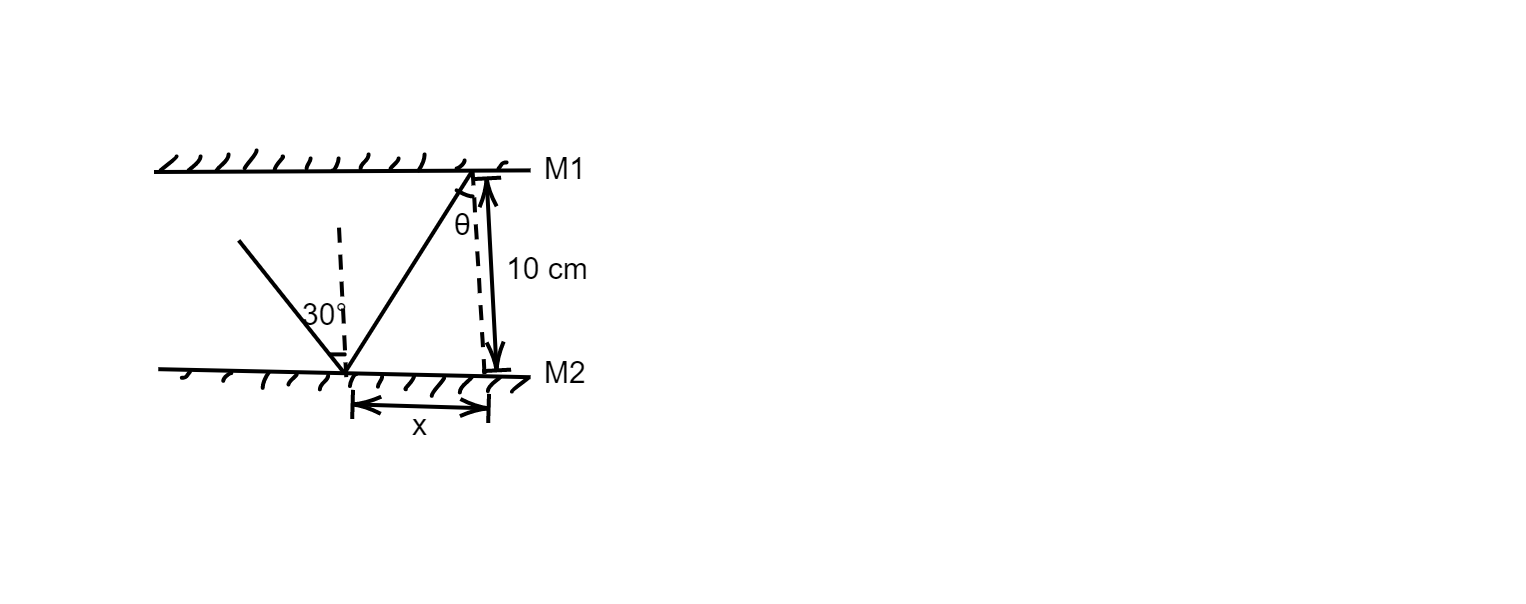Question
Question: Two plane mirror \({{M}_{1}}\) and \({{M}_{2}}\) have a length of \(2\text{ m}\) each and are \(10\t...
Two plane mirror M1 and M2 have a length of 2 m each and are 10 cm apart. A ray of light is incident on one end of the mirror M2 at an angle of 30∘. The number of reflections light undergoes before reaching the other end is then.

Solution
To solve these types of questions we first have to find out the horizontal distance that the light ray travels before being incident on another plane mirror and then eventually calculate the number of such reflections made by the light ray to final reach the end of the plane mirror.
Complete step-by-step solution:
Let us assume that the light ray travels a horizontal distance x after reflecting from mirror M2 and being incident on mirror M1 and the angle of incidence of the light ray be θ. For better understanding look at the figure:

Now, we know that the plane mirrors M1 and M2 have a length of 2 m each and are 10 cm apart. Hence from observing the figure, we can write down that:
tanθ=10x
Now, we know that the angle of incidence and angle of reflection are equal in case of reflection from a plane mirror, hence the angle of reflection of the light ray when reflected from mirror M2 will be 30∘ and thus the angle of incidence of the light ray when the light ray is incident on mirror M1 will also be 30∘ which makes θ=30∘. On substituting the values in the equation, we get:
